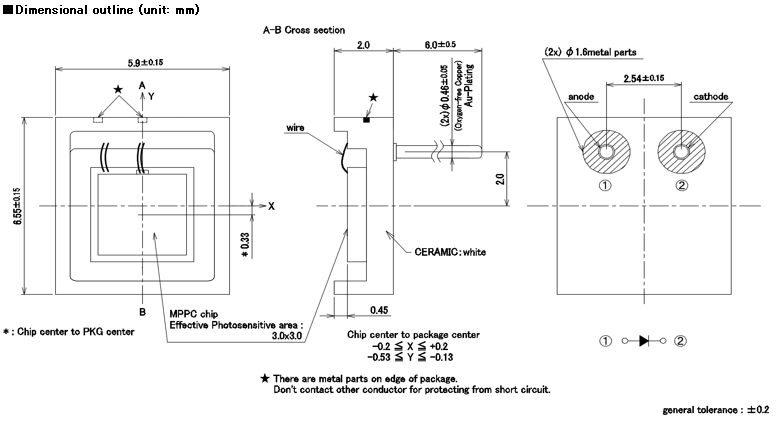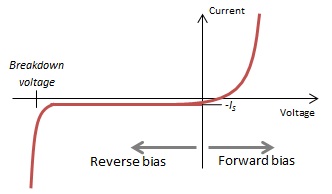Difference between revisions of "SiPMs"
| Line 34: | Line 34: | ||
|} | |} | ||
Wanting to check if a sensor is working correct we asked Martin van Beuzekom for the R & D lab to help us and helped us with a method to determine if a sensor is broken. First we wanted to check if the anode and cathode were indeed oriented as was depicted on the schematics. To check this we need to characterize the voltage vs. current. The characteristic graph of how this would look like could be found below. | Wanting to check if a sensor is working correct we asked Martin van Beuzekom for the R & D lab to help us and helped us with a method to determine if a sensor is broken. First we wanted to check if the anode and cathode were indeed oriented as was depicted on the schematics. To check this we need to characterize the voltage vs. current. The characteristic graph of how this would look like could be found below. | ||
| − | [[File:BiasDirection.jpg|center|frame|Voltage vs. Current for a diode]] | + | [[File:BiasDirection.jpg|center|frame|Voltage vs. Current characteristic for a diode]] |
Revision as of 09:41, 22 February 2022
Useful resources:
XAMS SiPMs
XAMS readout board design shown below.
Connecting the sensor to the filter
The SiPM has a cathode and an anode as can be seen in the schematic drawing below, the drawing also shows how the SiPM is oriented as a diode. A SiPM needs to be reversed biased, which means the voltage at the cathode is higher than at the anode. This way there is no current flowing until the electric field is so high the SiPM brakes down, the brake down voltages of the used SiPMs is also shown below. Sensor 1804 was already marked as defect, but we still used it to test our electronics just to be sure it worked without breaking a new sensor. This sensor first gave signals which made it seem like it was still working, but after switching around electronics we were not able to get a signal. We therefore decided to check all the used sensors if they are broken.
|
Wanting to check if a sensor is working correct we asked Martin van Beuzekom for the R & D lab to help us and helped us with a method to determine if a sensor is broken. First we wanted to check if the anode and cathode were indeed oriented as was depicted on the schematics. To check this we need to characterize the voltage vs. current. The characteristic graph of how this would look like could be found below.


